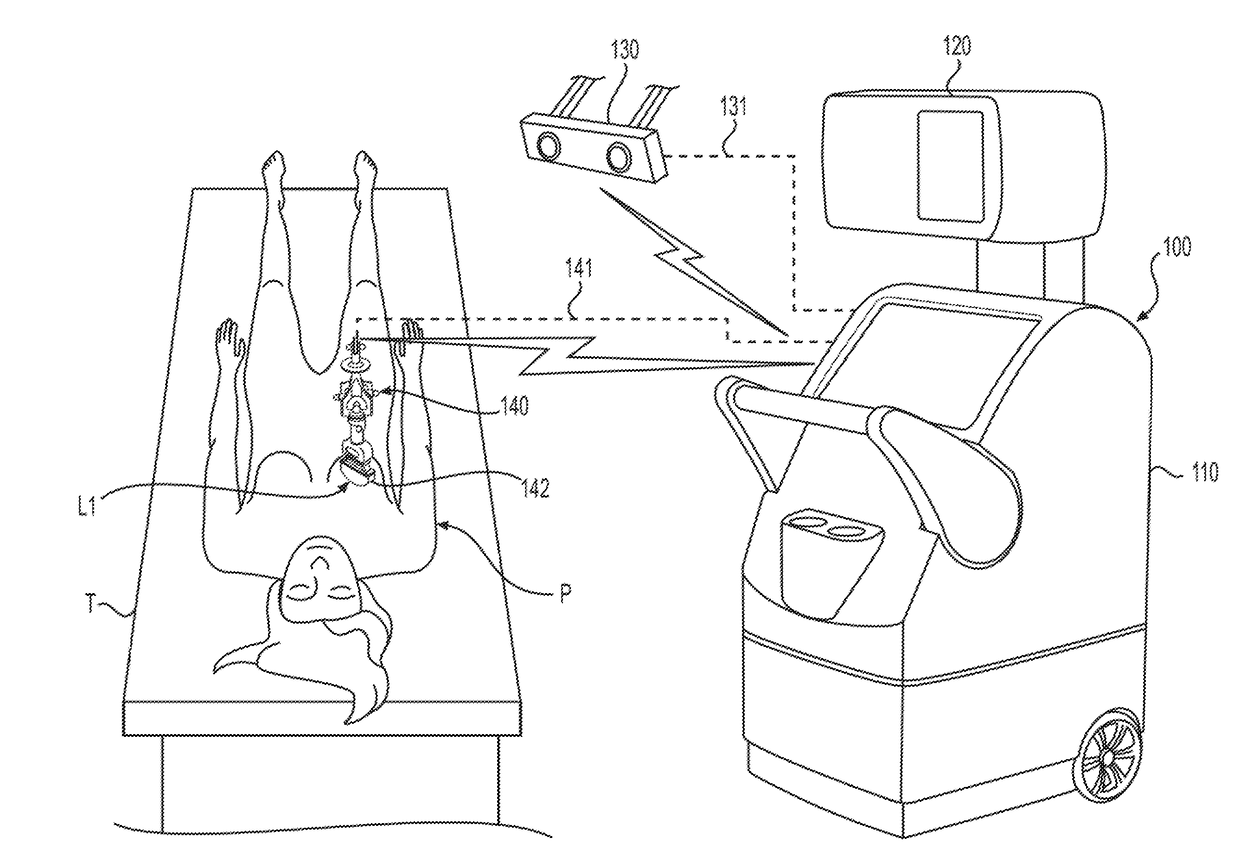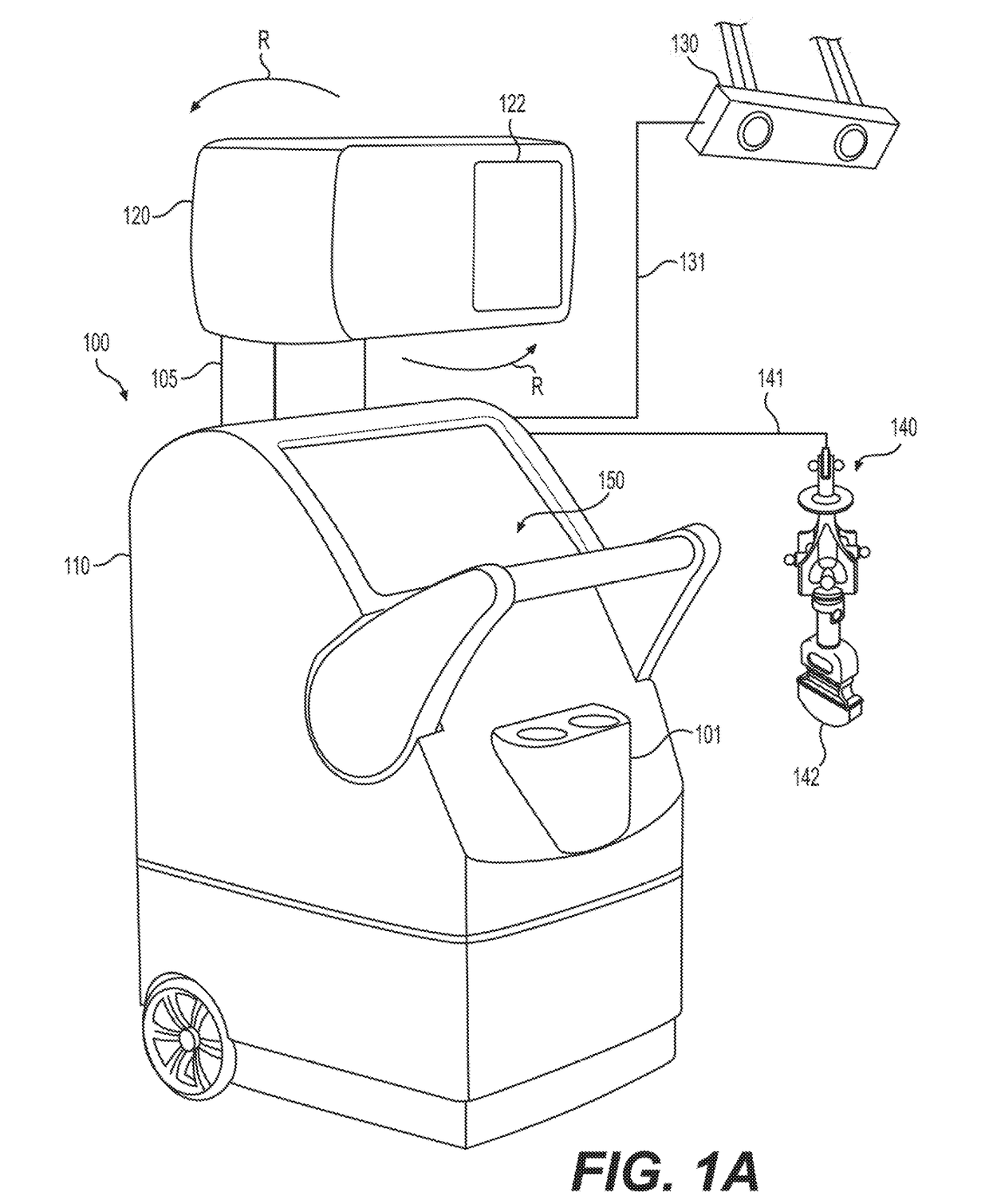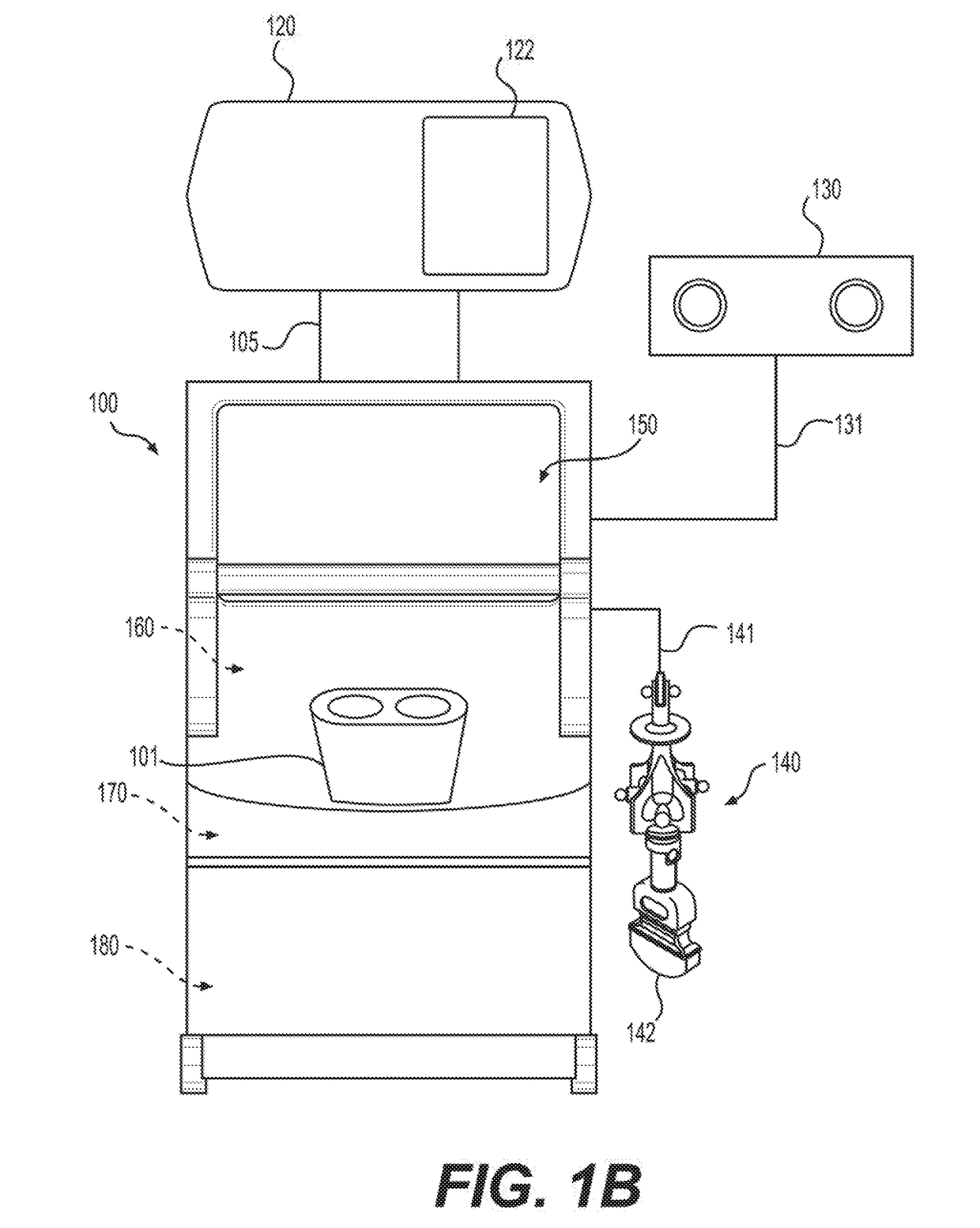Tissue imaging system and method for tissue imaging
a tissue imaging and tissue technology, applied in the field of medical devices, can solve the problems of increasing the likelihood of inaccurate measurements, affecting the likelihood of errors, and inability to accurately and accurately image cancerous, necrotic or other diseased tissue, etc., to achieve convenient determination, convenient and accurate tissue imaging, and efficient
- Summary
- Abstract
- Description
- Claims
- Application Information
AI Technical Summary
Benefits of technology
Problems solved by technology
Method used
Image
Examples
Embodiment Construction
[0059]Referring now to FIG. 1A, there is illustrated a tissue imaging system 100. The system 100 includes a main body 110, an X-Ray Chamber 120, a neck 105, an interface display 150, and an Infrared 3D Imaging Camera 130. The neck 105 connects the X-Ray Chamber 120 with the main body 110. The neck 105 also provides a support / anchor for the X-Ray Chamber 120 to rotate in the arrowed direction R about its central axis. The ultrasound probe with tracker system 140 includes or incorporates an ultrasound probe 142. Also, the imaging system 100 can include a holder 101 that can house an ultrasound probe and an ultrasound gel or other items for the imaging procedure, for example.
[0060]Referring to FIG. 1B, there is schematically illustrated the main body 110 that includes an X-Ray Generator, to be described, within the X-Ray Chamber 120, an X-ray controller system 160 for controlling various operations of the X-ray imaging generation and processing in the imaging system 100, an ultrasound ...
PUM
| Property | Measurement | Unit |
|---|---|---|
| distance | aaaaa | aaaaa |
| rotational angle | aaaaa | aaaaa |
| angular rotation | aaaaa | aaaaa |
Abstract
Description
Claims
Application Information
 Login to View More
Login to View More - R&D
- Intellectual Property
- Life Sciences
- Materials
- Tech Scout
- Unparalleled Data Quality
- Higher Quality Content
- 60% Fewer Hallucinations
Browse by: Latest US Patents, China's latest patents, Technical Efficacy Thesaurus, Application Domain, Technology Topic, Popular Technical Reports.
© 2025 PatSnap. All rights reserved.Legal|Privacy policy|Modern Slavery Act Transparency Statement|Sitemap|About US| Contact US: help@patsnap.com



